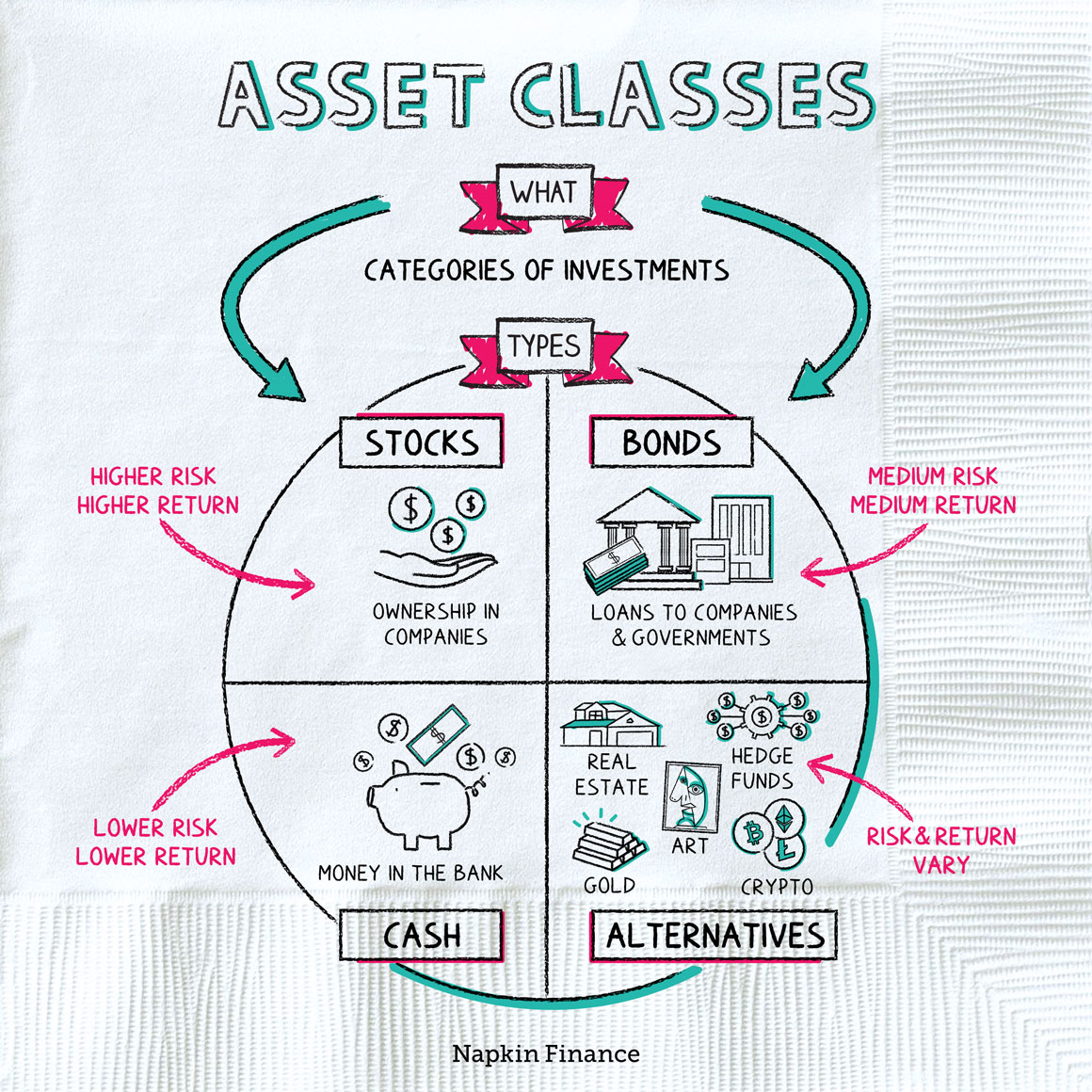Market Capitalization
Size it Up
Market capitalization (or just “market cap”) is a measure of a company’s total value.
If you ever read an article describing a corporation as a “$100-billion company” or saying that a business is “worth $100 billion,” the article is probably referring to market cap.
Market cap is calculated by multiplying a company’s stock price by its total number of shares:
(Current stock price) x (Total shares outstanding) = Market cap
It basically measures the total value of all of the company’s stock.
Investors mainly use market cap to sort companies by size. Although market cap categories aren’t totally standardized, investors usually divide stocks into three main buckets:
| Large cap | Mid cap | Small cap | |
| Market cap range | $10 billion or more | $2 billion to $10 billion | Less than $2 billion |
| Business characteristics | Multinational, with many different business lines, divisions, and types of products and services | Growing and expanding, both with products and geographic reach | Narrower business focus and geographic reach but may be growing fast |
| Growth | Lower | Moderate | Higher |
| Risk | Lower | Moderate | Higher |
Of course, those characteristics only describe the typical profile. Any specific company may not fit the mold.
In general, investors and others may use market cap anytime they want to rank companies by size or estimate a price tag for an entire company.
More specifically, it may be used:
- By investors—to sort or rank potential investments
- By investment managers—to define their investment strategy
- By index providers—to decide which companies to include in a market index
- By corporations—to look for companies they might acquire
A company’s market cap can also give clues as to its likely growth rate and the types of risks it may face, which can be helpful to lots of users.
Unlike when you check your account balance at the bank, putting a dollar value on a company is subjective and squishy. Market cap is one way, but it’s not the only one. Enterprise and book value are two other often cited measures. Here’s how they stack up:
| Market cap | Enterprise value | Book value | |
| Formula | Stock price x shares outstanding |
Market cap + total debt – cash |
Total assets – total liabilities |
| What it shows | How the stock market values the company | What a potential acquirer might pay to buy the company | What the company would be worth if it were liquidated |
| Pros | Available easily in real time | Provides a fuller picture of value | More objective |
| Cons | Glosses over lots of details | Different ways of calculating mean it’s not always comparable | Not so relevant for successful healthy companies |
Experts often recommend investing in a mix of larger and smaller companies as one way to diversify your portfolio.
Large-cap stocks may deliver lower returns over the long run but often hold up better in a downturn. Stocks of small-cap companies may be more volatile but can also give you a chance at getting in on the Next Big Thing. And mid-cap stocks can give you a risk-reward mix that’s somewhere in the middle.
Market capitalization or “market cap” is a measure of a company’s value that’s determined by its stock price. Investors and others may use market cap as a quick and easy way of sorting companies by size. Investing in a mix of companies of different sizes is one way experts often recommend for diversifying your portfolio.
- Apple was the first U.S. company to surpass both the $1 trillion and $2 trillion market capitalization marks.
- A single share of Warren Buffett’s company, Berkshire Hathaway, is worth more than $300,000. That’s about ten times the price Buffett paid for his own house.
- Small, medium, and large aren’t the only market cap games in town. There are also “mega caps,” “smid caps,” “micro caps,” and “nano caps” to choose from.
- A company’s market capitalization is a measure of its value that’s based on real-time changes in its stock price.
- Market cap is calculated by multiplying a company’s shares outstanding by its current stock price.
- There are three main categories of market capitalization: large, mid, and small caps.
- A company’s market cap may determine which stock index it’s included in or whether another company decides to acquire it.
- Market cap can also help investors understand how much potential risk and reward a particular company’s stock could offer.




